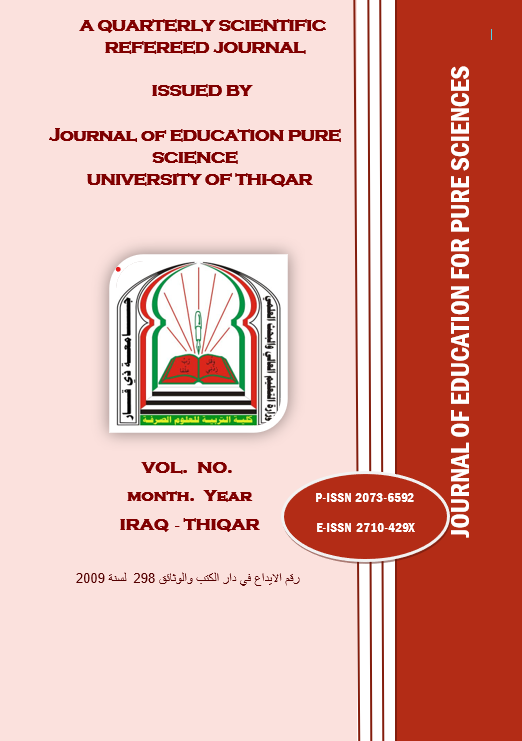Abstract
The physisorption procedure and charge transfer phenomena are very important features in surface
physics, it contribute to many of important applications in solid state physics. Density functional
theory (DFT) with the package of Gaussian 09 at the basis set LanL2Dz, B3LYP level has been
utilized to attain the geometrical nanostructure, density contour maps, infrared spectra, electrostatic
potential, LUMO energy, HOMO energy, energy band gap, electron affinity, ionization potential,
density of states, dipole moment and the polarizability for the geometrical nanostructures (Cu9) ,(Cu10)
, (Cu9-OTS) ,(Cu9-Pyrimidine). Calculations of the geometrical nanostructure (Cu10-OTS) has been
accomplished at the basis set 6-31G , but the calculations of the geometrical nanostructure (Cu10-
Pyrimidine) has been accomplished at basis set LanL2MB. The interactions between the tosylate
(OTS) and the nanocopper surface leads to charge transfer phenomena. The interaction between
pyrimidine and the nanocopper surface leads to physisortion phenomena. Charge transfer phenomena
and physisorption precedures demonstrate apparently in the pictures of contour density maps.
Calculations of the energy band gap of the pure geometrical nanostructure (Cu9) and (Cu10) show that
the value of energy gap of those nanostructures is pioneering in the manufacture of the electronic
devices. Calculations of the ionization energy and electron affinity disclosure the best geometrical nanostructure to endow the electrons in an interaction, so the calculations disclosure the best
geometrical nanostructure to acquire the electrons in an interaction. Calculations of dipole moment and
polarizability disclosure the largest dipole moment and the highest activity geometrical nanostructure
in the research under the treatise. Physisorption procedure and charge transfer phenomena make all
hybrid geometrical nanostructures have the symmetry C1 . Physisorption phenomena makes some
geometrical nanostructures have anti-ferromagnetic features, but it makes other geometrical
nanostructures loses the anti-ferromagnetic feature.
physics, it contribute to many of important applications in solid state physics. Density functional
theory (DFT) with the package of Gaussian 09 at the basis set LanL2Dz, B3LYP level has been
utilized to attain the geometrical nanostructure, density contour maps, infrared spectra, electrostatic
potential, LUMO energy, HOMO energy, energy band gap, electron affinity, ionization potential,
density of states, dipole moment and the polarizability for the geometrical nanostructures (Cu9) ,(Cu10)
, (Cu9-OTS) ,(Cu9-Pyrimidine). Calculations of the geometrical nanostructure (Cu10-OTS) has been
accomplished at the basis set 6-31G , but the calculations of the geometrical nanostructure (Cu10-
Pyrimidine) has been accomplished at basis set LanL2MB. The interactions between the tosylate
(OTS) and the nanocopper surface leads to charge transfer phenomena. The interaction between
pyrimidine and the nanocopper surface leads to physisortion phenomena. Charge transfer phenomena
and physisorption precedures demonstrate apparently in the pictures of contour density maps.
Calculations of the energy band gap of the pure geometrical nanostructure (Cu9) and (Cu10) show that
the value of energy gap of those nanostructures is pioneering in the manufacture of the electronic
devices. Calculations of the ionization energy and electron affinity disclosure the best geometrical nanostructure to endow the electrons in an interaction, so the calculations disclosure the best
geometrical nanostructure to acquire the electrons in an interaction. Calculations of dipole moment and
polarizability disclosure the largest dipole moment and the highest activity geometrical nanostructure
in the research under the treatise. Physisorption procedure and charge transfer phenomena make all
hybrid geometrical nanostructures have the symmetry C1 . Physisorption phenomena makes some
geometrical nanostructures have anti-ferromagnetic features, but it makes other geometrical
nanostructures loses the anti-ferromagnetic feature.
